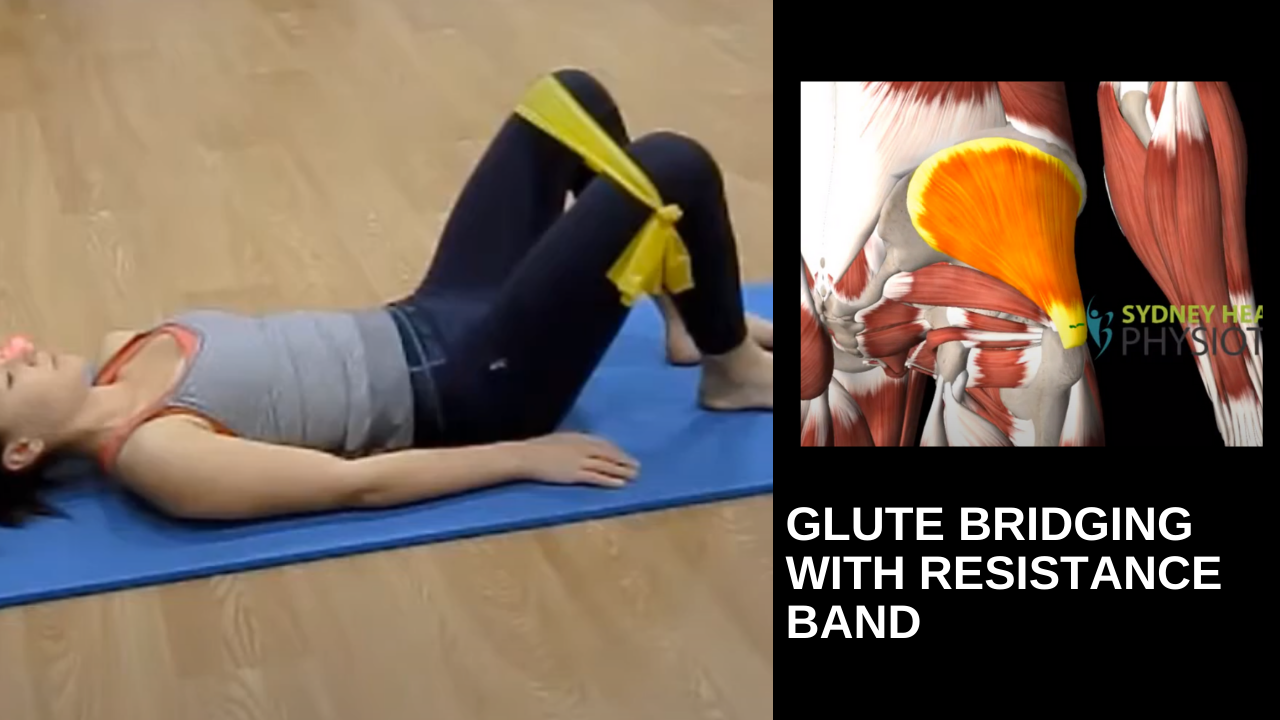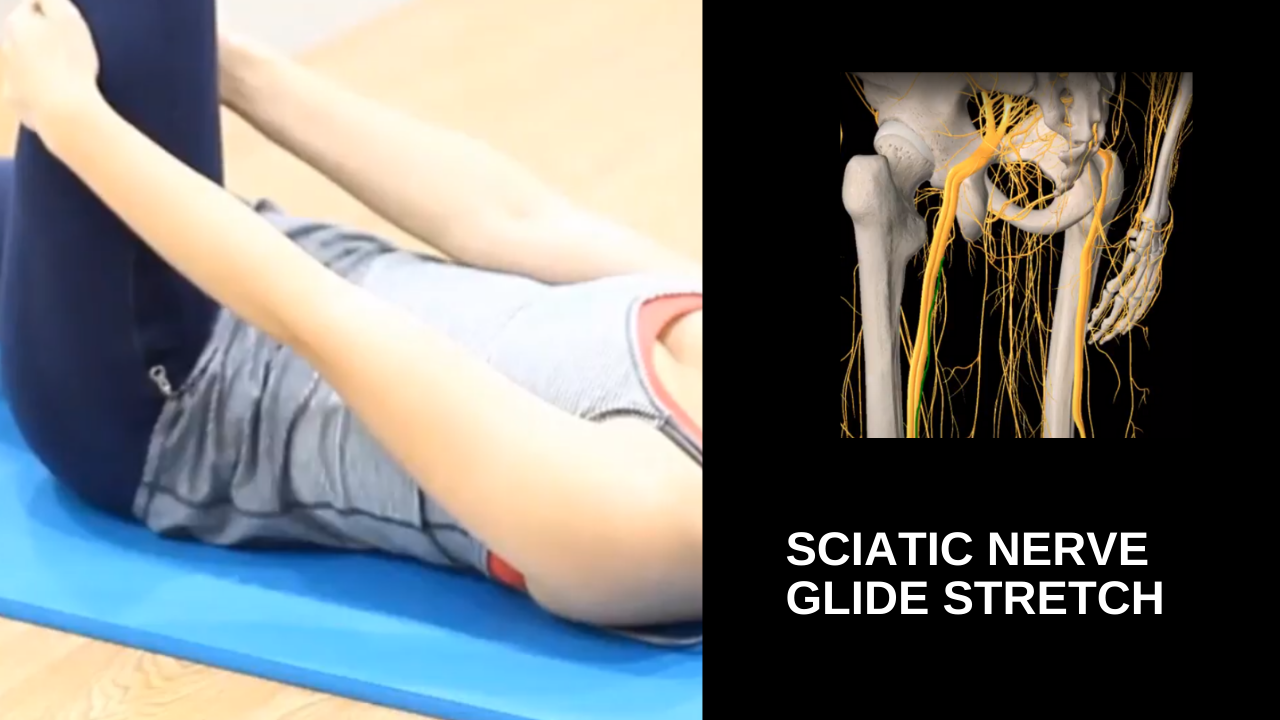Core activation
This supine core exercise targets deep abdominal muscles to support and protect the lower back. Ideal for anyone with back pain, desk workers, and individuals aiming to enhance core stability, it strengthens the core, reduces strain, and promotes better posture and back health.
Glute bridging with resistance band
Supine glute bridges with a band around the legs activate and strengthen the hip glutes, essential for back pain prevention and improved stability. Ideal for those with lower back discomfort, athletes, and individuals seeking core and hip support, this exercise promotes strong glutes to protect the lower back and enhance posture.
Sciatic nerve glide stretch
The lying sciatic nerve glide stretch helps relieve tension along the sciatic nerve, reducing pain and improving flexibility in the lower back, glutes, and legs. Ideal for those with sciatica or nerve-related discomfort, this exercise promotes gentle nerve mobility, easing stiffness and enhancing comfort in daily activities.
Is your desk job causing you neck, back and shoulder pain?
Neck posture & ergonomics for office workers.
Pelvic floor health in women resolves complications
Pelvic floor conditions in women’s health
Sacro-iliac joint pain
A high percentage of lower back pain originates from the sacroiliac joint (SIJ), a common but often overlooked source of discomfort. The good news? SIJ-related pain is highly treatable. With targeted assessment and therapy, our physios can help relieve your pain and restore comfortable movement.
Upper cross posture from long screen time
Upper-crossed posture from long screen time leads to forward-rounded shoulders and a strained neck, common among those with long office hours. This posture imbalance places excess tension on the neck and upper back muscles, often resulting in discomfort and stiffness. Addressing this with targeted exercises can help realign posture and reduce neck strain.
How dry needling works?
Dry needling targets trigger points in muscles, effectively reducing musculoskeletal (MSK) pain by relieving muscle tension and promoting natural healing. This technique helps to release tight areas, improve blood flow, and restore mobility, providing quick relief and supporting long-term pain management.
Better sports performance with controlled and efficient movements
Controlled, smooth movement is essential for preventing musculoskeletal (MSK) pain, as it minimizes strain on joints and muscles. When movement is well-coordinated, it reduces the risk of overloading specific areas, enhancing balance and stability. Developing movement control promotes joint alignment, prevents injury, and supports long-term physical health.












